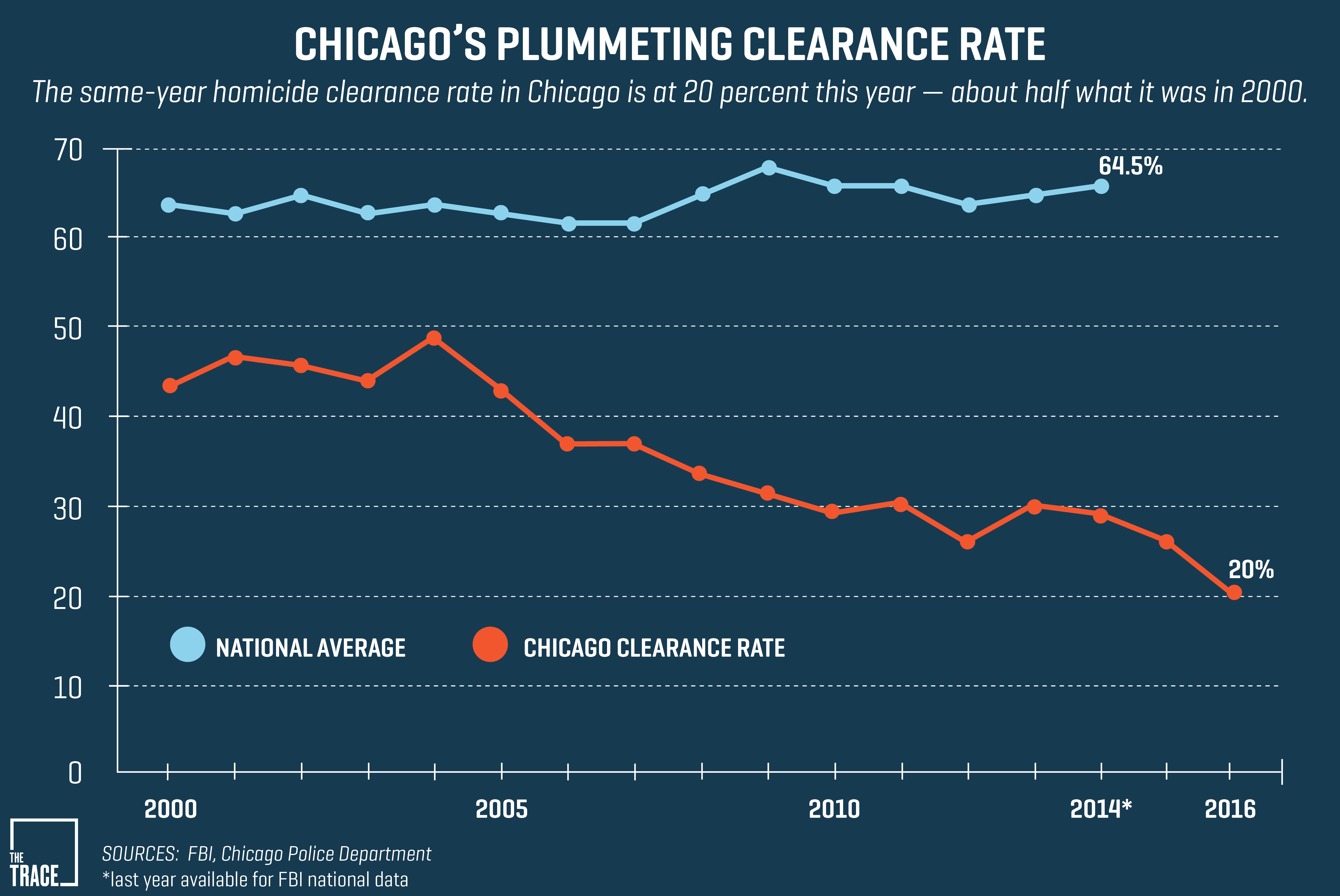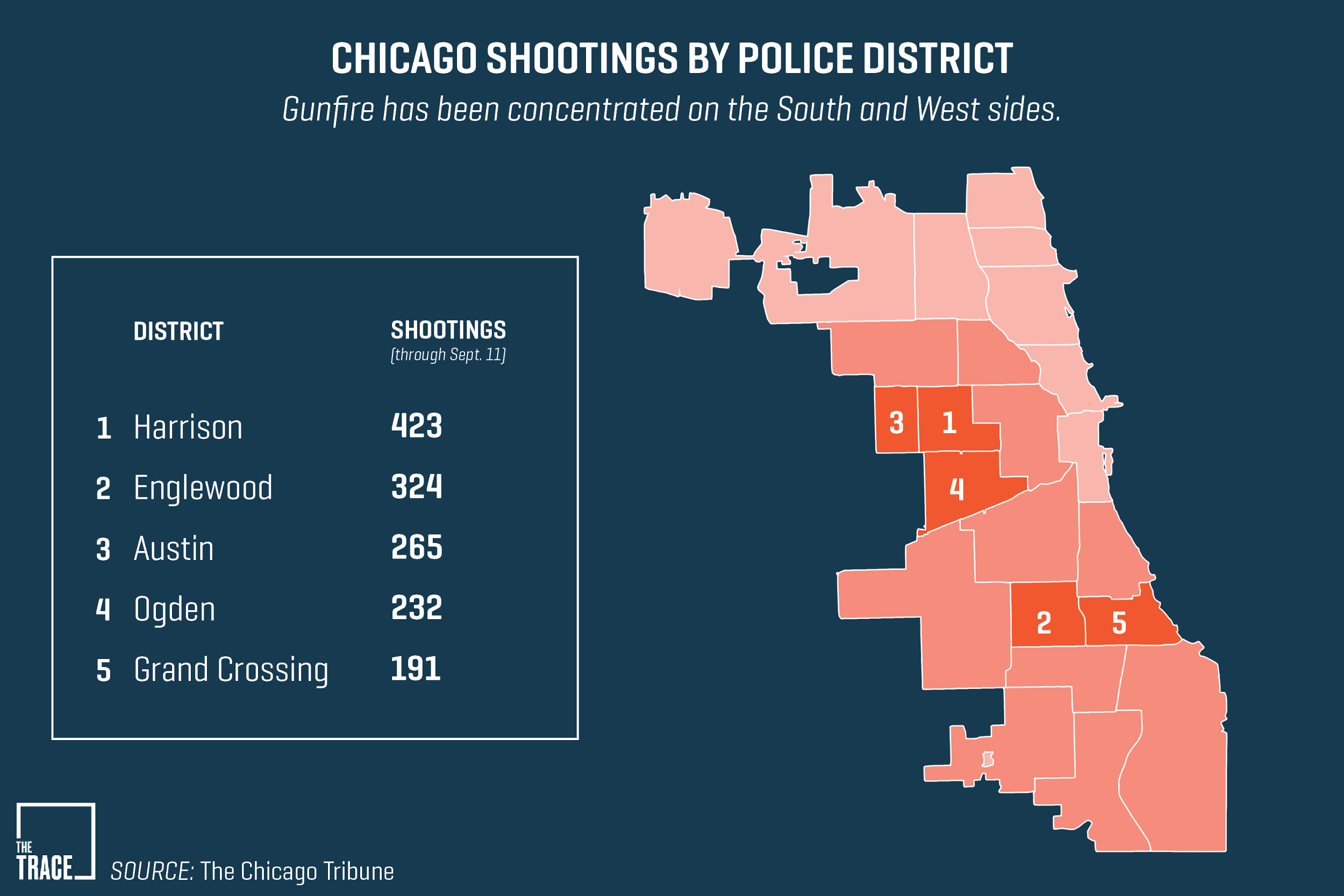Here’s how bad the violence is in Chicago right now. There have been so many murders this year that the city is driving up the national murder rate. An analysis of crime data in the nation’s 30 largest cities, released Monday by the Brennan Center for Justice at New York University, anticipates a 13 percent increase in the country’s murder rate between 2015 and 2016 — half of which is due to Chicago’s violence alone.
The city experienced more than 3,000 shootings — an almost 50 percent increase over last year — and 500 homicides since the beginning of 2016. August was the deadliest month for gun violence in more than two decades. At the current pace, Chicago is projected to top 700 murders by the end of the year. That would be an increase of 46 percent over the 478 homicides the Federal Bureau of Investigation reported for 2015, according to a review of federal crime data released on Monday.
City officials have cited entrenched poverty, segregation, lack of jobs, a fractured gang system, and easy access to guns as factors contributing to the sheer volume of shootings. Chicago also has an understaffed police force, low homicide clearance rates, and stark murder inequality.
In a speech Thursday, Mayor Rahm Emanuel declared that gun violence in the city “corrodes our core.” He outlined a plan that includes adding nearly 1,000 new police officers over the next two years — including 200 homicide detectives — and equipping the entire force with body cameras. He also proposed new laws targeting bad-apple gun dealers, instituting longer prison sentences for repeat gun offenders, and investing in job training and mentoring programs.
We compiled some key figures that help put the bloodshed in context.
The Chicago Police Department has lost 25 percent of its detectives since 2009.

Detective work is integral to clearing cases, the first step in making sure shooters face justice. Research shows that the more detectives assigned to one case, the more likely that case is to be cleared. Certainty of punishment is a crime deterrent. But in Chicago, a dwindling number of police detectives are struggling to keep pace with a load of new cases. There were 863 detectives as of July, down from 1,151 in 2009, according to the Fraternal Order of Police Lodge 7, the collective bargaining agent for Chicago’s police union.
Chicago also has stark murder inequality — meaning that a disproportionate share of the violence affects a handful of neighborhoods. Those neighborhoods, according to The Marshall Project, are patrolled by some of the city’s least experienced cops.
“Homicides have gone up and the number of shootings has gone up; and the number of detectives has gone down,” Dean Angelo, president of Fraternal Order of Police Lodge 7, told the Chicago Tribune. “We’re not going in the right direction.”
City officials say there’s also a need for more officers on street patrol. “We have a large number of police officers retiring and a big increase in crime and people demanding more cops,” Alderman Pat O’Connor told the Chicago Sun Times in early September. “We’re not gonna be able to keep up with attrition with the current numbers. We need to put more officers on the street.”
There are more than 450 vacancies on Chicago’s 12,100-officer police force, according to the Sun Times. On Wednesday, the department unveiled a plan to add 970 personnel over the next two years, including 500 new patrol officers and 200 detectives, the latter specifically to help address low clearance rates.
The same-year homicide clearance rate in Chicago is at 20 percent this year — half what it was in 2000.

Most murder cases aren’t being solved. As of September 22, the police department had cleared 20 percent of homicides that happened this year. A case has been cleared when a suspect has been arrested, charged, and turned over to the court (or in a few excepting circumstances, like when the suspect dies before charges are filed). When homicide cases from other years are factored in, Chicago’s clearance rate for 2016 rises to 30 percent, according to a spokesman for the police department. That’s still less than half the national rate of 64.5 percent, according to the FBI’s statistics for 2014, the latest year available. It’s also lower than rates in other cities, like Philadelphia’s 49 percent or Houston’s 56 percent.
Chicago police attribute low clearance rates to a lack of cooperation from witnesses. But their unwillingness to share information could be rooted less in principle and more in fear of more shootings. As journalist Alex Kotlowitz has found after years of investigating Chicago’s street violence, “most victims and witnesses stay quiet because they’re afraid of retaliation by friends of the shooter, not because of some unwritten code of the streets.”
When residents do not trust the police, they’re less likely to report crimes and cooperate in crime investigations, perpetuating the ongoing cycle of violent crime. The fatal shooting of black teenager Laquan McDonald by a white officer, captured on video last year, only deepened the mistrust between residents and police. Though not all police shootings draw such widespread attention, a Chicago Tribune analysis showed that these kinds of incidents have happened with “brutal regularity” in recent years. Only six percent of black Chicagoans believe city cops treat all citizens fairly, according to a Tribune poll.
Nearly half of this year’s 3,000-plus shootings happened in just five police districts in the city’s South and West sides.

Within Chicago, there is a stark murder inequality. An analysis by The Trace of citywide crime data found that the risk of getting shot in the most dangerous neighborhoods is nine times greater than in the safest neighborhoods.
Nearly half of the city’s more than 3,000 shootings were clustered in five of the city’s 22 police districts, according to data analyzed by the Tribune. The West Side’s Harrison district has been hit hardest, with 423 shootings as of September 11. In the Ogden and Austin districts, both homicides and shootings have more than doubled since the same time last year. The South Side Englewood and Grand Crossing districts also saw notable upticks.
Murder inequality echoes other forms of inequality: The neighborhoods with the most shootings are the same areas that have suffered “decades of poverty, entrenched segregation, rampant narcotics sales and other social ills,” reported the Tribune.
As one local reporter put it, “White Chicago feels relatively safe, but black and brown Chicago can hear the mothers screaming.”
[Photo: AP/Paul Beaty]

